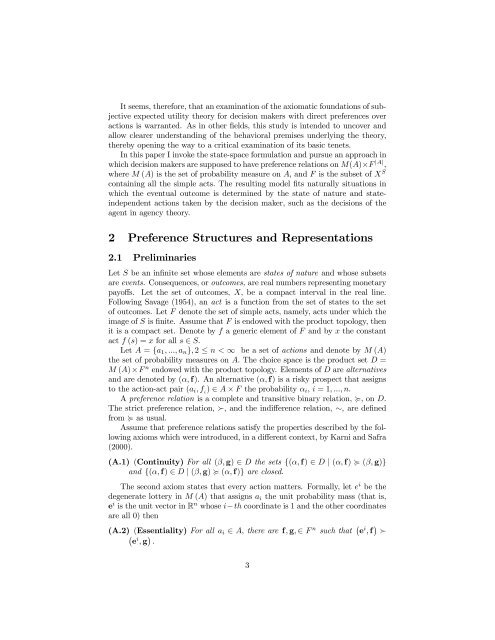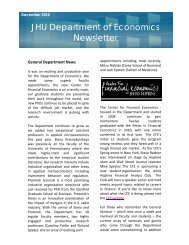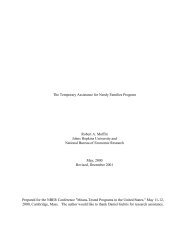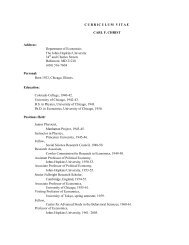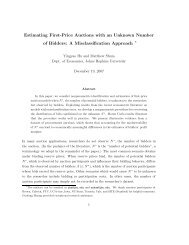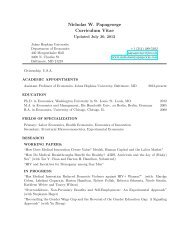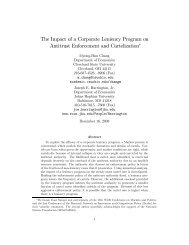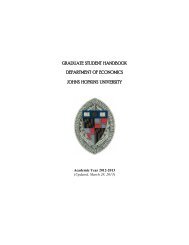Subjective Expected Utility Theory with Costly Actions - Economics ...
Subjective Expected Utility Theory with Costly Actions - Economics ...
Subjective Expected Utility Theory with Costly Actions - Economics ...
You also want an ePaper? Increase the reach of your titles
YUMPU automatically turns print PDFs into web optimized ePapers that Google loves.
It seems, therefore, that an examination of the axiomatic foundations of subjective<br />
expected utility theory for decision makers <strong>with</strong> direct preferences over<br />
actions is warranted. As in other …elds, this study is intended to uncover and<br />
allow clearer understanding of the behavioral premises underlying the theory,<br />
thereby opening the way to a critical examination of its basic tenets.<br />
In this paper I invoke the state-space formulation and pursue an approach in<br />
which decision makers are supposed to have preference relations on M(A)£F jAj ;<br />
where M (A) is the set of probability measure on A; and F is the subset of X S<br />
containing all the simple acts: The resulting model …ts naturally situations in<br />
which the eventual outcome is determined by the state of nature and stateindependent<br />
actions taken by the decision maker, such as the decisions of the<br />
agent in agency theory.<br />
2 Preference Structures and Representations<br />
2.1 Preliminaries<br />
Let S be an in…nite set whose elements are states of nature and whose subsets<br />
are events. Consequences, or outcomes, are real numbers representing monetary<br />
payo¤s. Let the set of outcomes, X; be a compact interval in the real line.<br />
Following Savage (1954), an act is a function from the set of states to the set<br />
of outcomes. Let F denote the set of simple acts, namely, acts under which the<br />
image of S is …nite. Assume that F is endowed <strong>with</strong> the product topology, then<br />
it is a compact set. Denote by f a generic element of F and by x the constant<br />
act f (s) =x for all s 2 S:<br />
Let A = fa1; :::; ang; 2 · n


